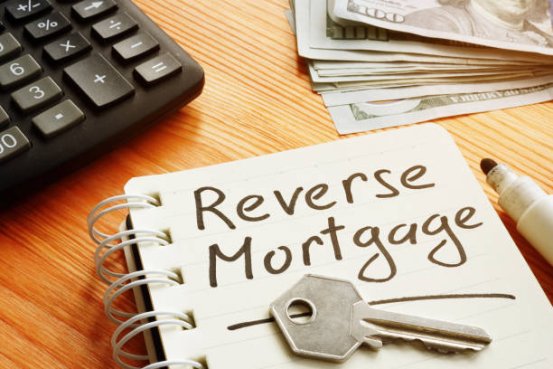The Best Travel Pillows 2024 – Pick the Right Buddy for Your Neck!
The 7 World's Most Dangerous Roads: A Perilous Journey
How to Choose the Right Air Fryer for Your Kitchen?
Top Rated Best Air Fryers of 2024: Expert Reviews
Boost Your Motivation: 7 Simple Hacks to Stay Inspired
Spoon Theory: A Creative Way to Understand Autism
9 Fun Thanksgiving Games and Activities: Bringing Laughter to the Holiday!
Understanding Reverse Mortgage Payouts in Canada
For Canadian homeowners aged 55 and above, reverse mortgages offer a way to unlock home equity without selling their property. Yet, many retirees remain unsure about how these loans disburse funds and what determines the amount they can access. Gaining a clear picture of payout mechanics is key to making sound decisions about this major retirement financial choice.
For Canadian homeowners aged 55 and above, reverse mortgages offer a way to unlock home equity without selling their property. Yet, many retirees remain unsure about how these loans disburse funds and what determines the amount they can access. Gaining a clear picture of payout mechanics is key to making sound decisions about this major retirement financial choice.

How Reverse Mortgages Deliver Funds
Reverse mortgages in Canada function differently from conventional loans. Rather than paying the lender each month, the homeowner receives money from the lender based on the equity in their home. The payout options typically include a one-time lump sum, regular monthly installments, or a blend of both.
A lump sum provides immediate access to a large share of equity, useful for major expenses such as renovations or paying off debt. Monthly installments, by contrast, create a predictable income stream to supplement pensions or other retirement income sources. Many borrowers choose a mix, taking part of the funds upfront and the rest in monthly payments.
Factors That Influence Your Payout Amount
Several factors determine how much you can receive through a reverse mortgage. Age is a primary factor—older borrowers generally qualify for a higher percentage, ranging from 10% to 55% of the property’s appraised value. The condition and location of the home also matter, as lenders evaluate market value and future potential.
Interest rates play a role, affecting the cost of borrowing against your equity. Any existing mortgage balance will be subtracted from the available funds, since reverse mortgage proceeds must first clear existing debts on the property. The product type and the lender’s own guidelines will also influence the final payout figure.
Key Points for Retirees
The funds from a reverse mortgage are generally tax-free, as they are considered loan proceeds rather than taxable income. However, interest compounds over time, causing the debt to grow while no payments are being made.
While no monthly repayments are required, the loan must be settled when the home is sold, when the borrower moves into long-term care, or upon death. In Canada, reverse mortgages are non-recourse loans, meaning neither you nor your heirs will owe more than the fair market value of the property, even if the loan exceeds it.
The Reality Behind Cash Amounts
Some marketing suggests borrowers can unlock large portions of their home equity, but the actual amounts are more modest. Most Canadians can access between 20% and 55% of the home’s value, with younger borrowers receiving less and older ones—especially those over 75—eligible for more.
The net cash available will also be reduced by fees, including appraisals, legal services, and setup charges, which typically range from $3,000 to $8,000 or more, depending on location and provider. Understanding these deductions helps manage expectations.
Canadian-Specific Insights
Canada’s reverse mortgage market is smaller and more tightly regulated than in the U.S., with only a few licensed lenders. Borrowers benefit from protections like mandatory independent legal advice and cooling-off periods. Unlike in the United States, reverse mortgages in Canada are not government-insured, so private lenders bear more risk and often set conservative borrowing limits.
From a tax perspective, reverse mortgage proceeds usually do not affect Old Age Security or Guaranteed Income Supplement benefits. However, certain provincial programs, like property tax deferrals, could be impacted—making it important to check with local authorities.
Comparing Providers and Costs
Provider | Setup Costs | Interest Rate Range | Maximum Loan-to-Value |
CHIP Reverse Mortgage | $1,795 - $3,795 | 5.99% - 7.99% | Up to 55% |
Equitable Bank | $2,000 - $4,000 | 6.25% - 8.25% | Up to 50% |
Private Lenders | $3,000 - $8,000 | 7.00% - 12.00% | Up to 45% |
Figures reflect the latest available data and may change. Independent verification is recommended before making commitments.
Making the Best Choice
Before committing, explore other options such as downsizing, conventional loans, or government assistance programs. Consider the long-term impact on your estate, calculate costs, and discuss the decision with family members who may be affected. A qualified financial advisor can help determine if a reverse mortgage supports your retirement goals.
While reverse mortgages can provide useful flexibility for Canadian retirees, they are not a one-size-fits-all solution. Understanding payout methods, realistic cash expectations, and all associated costs is essential for making the right decision. Compare offers from multiple providers and ensure you fully understand the terms before proceeding.











